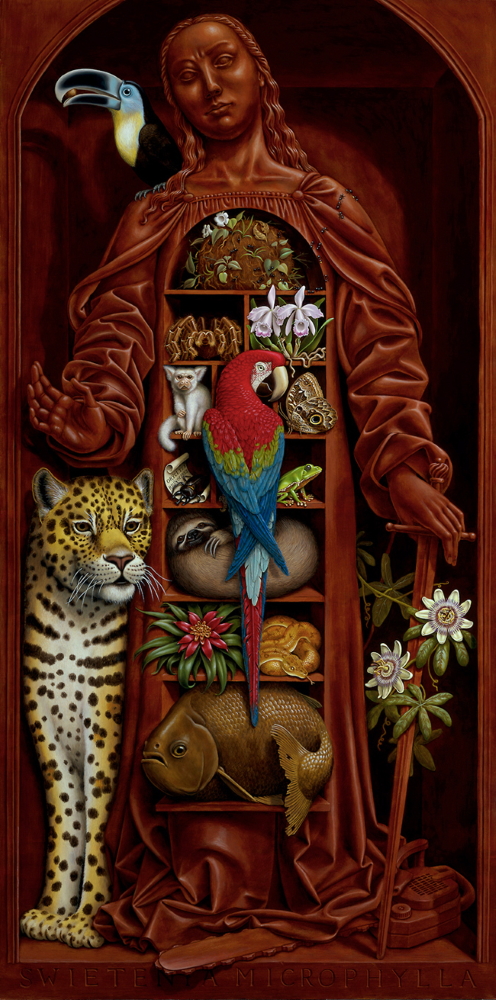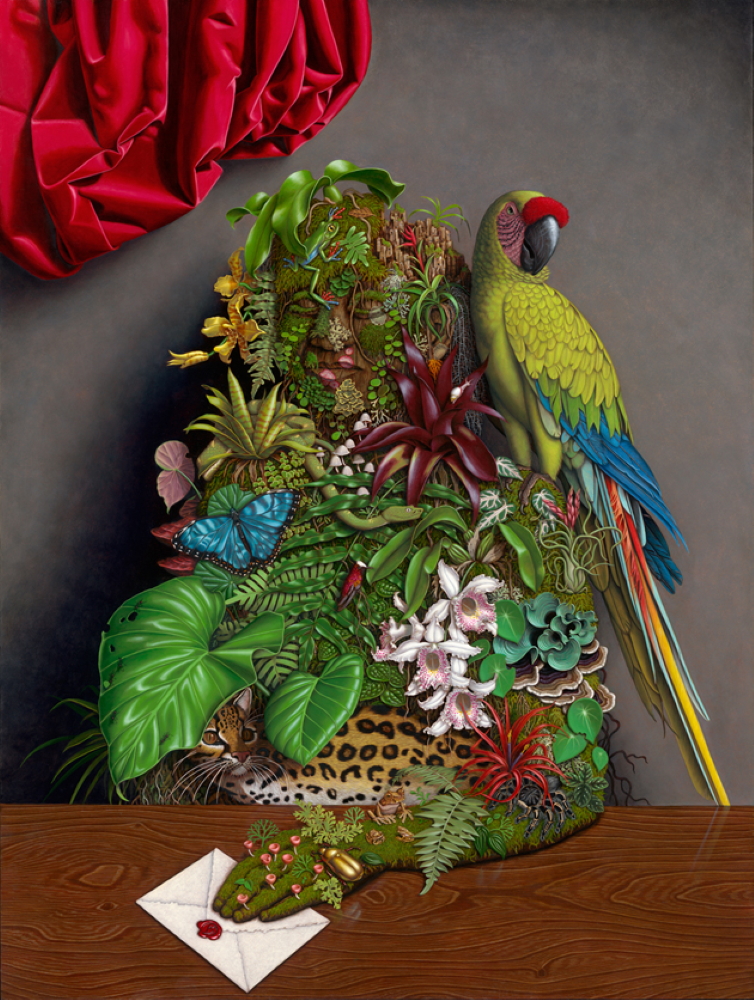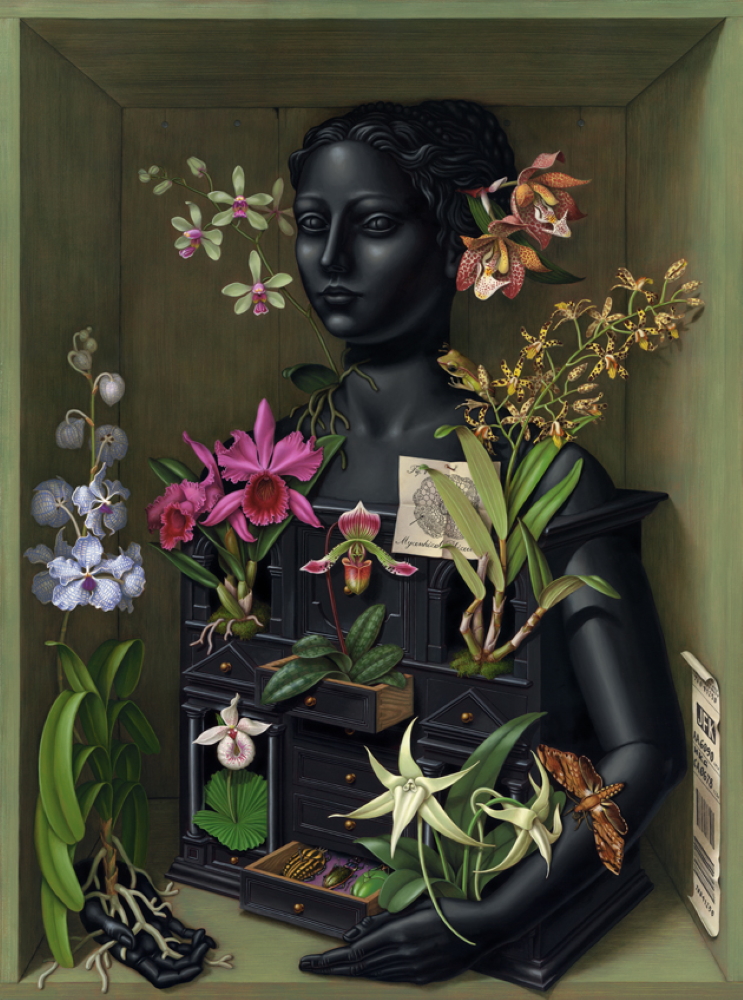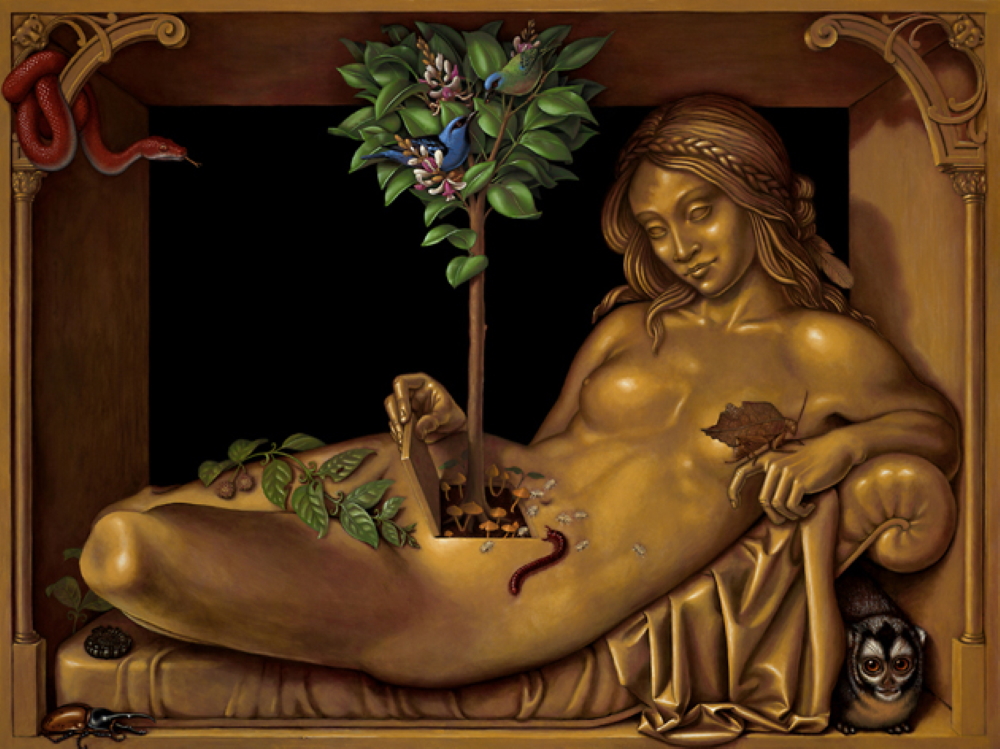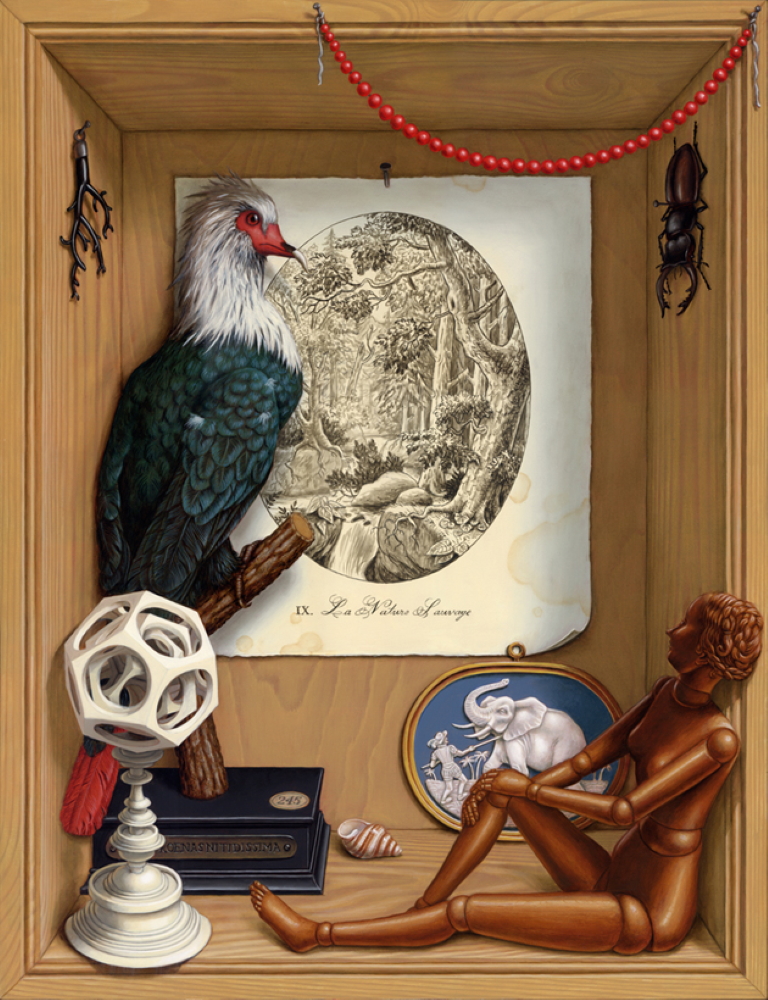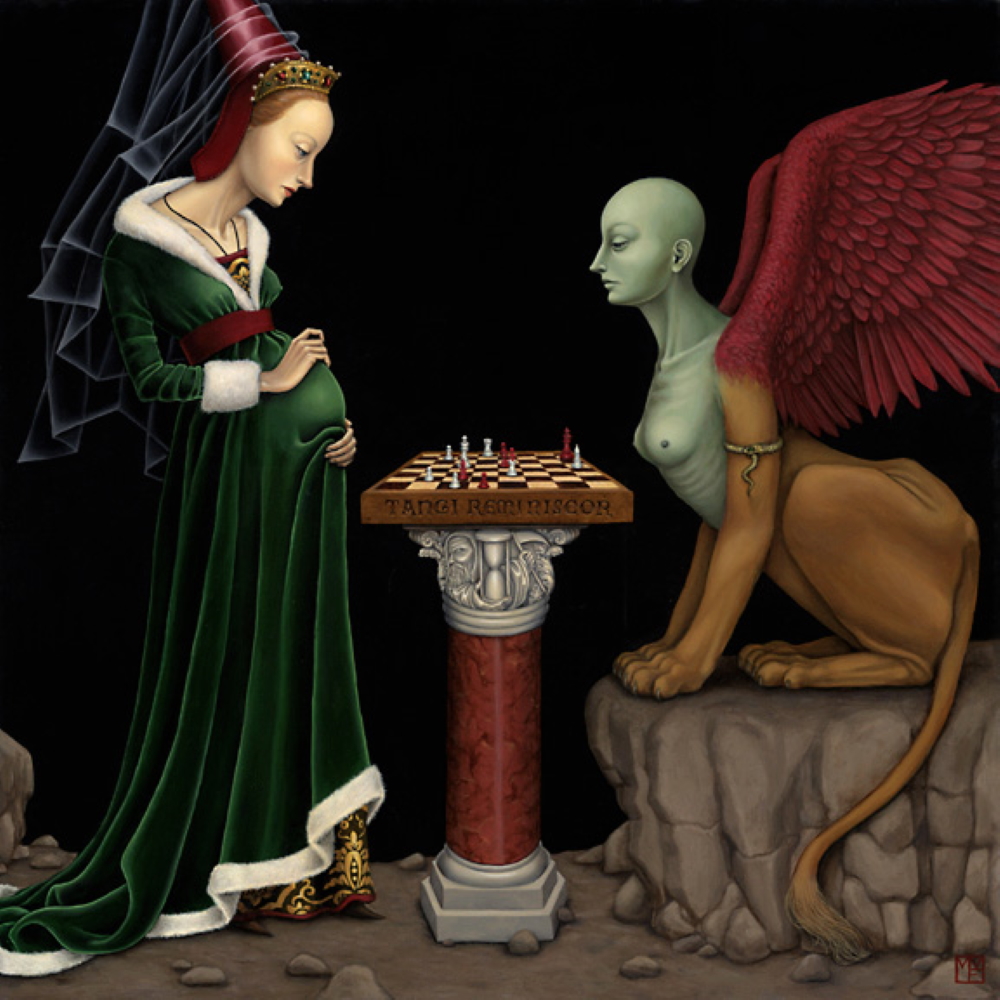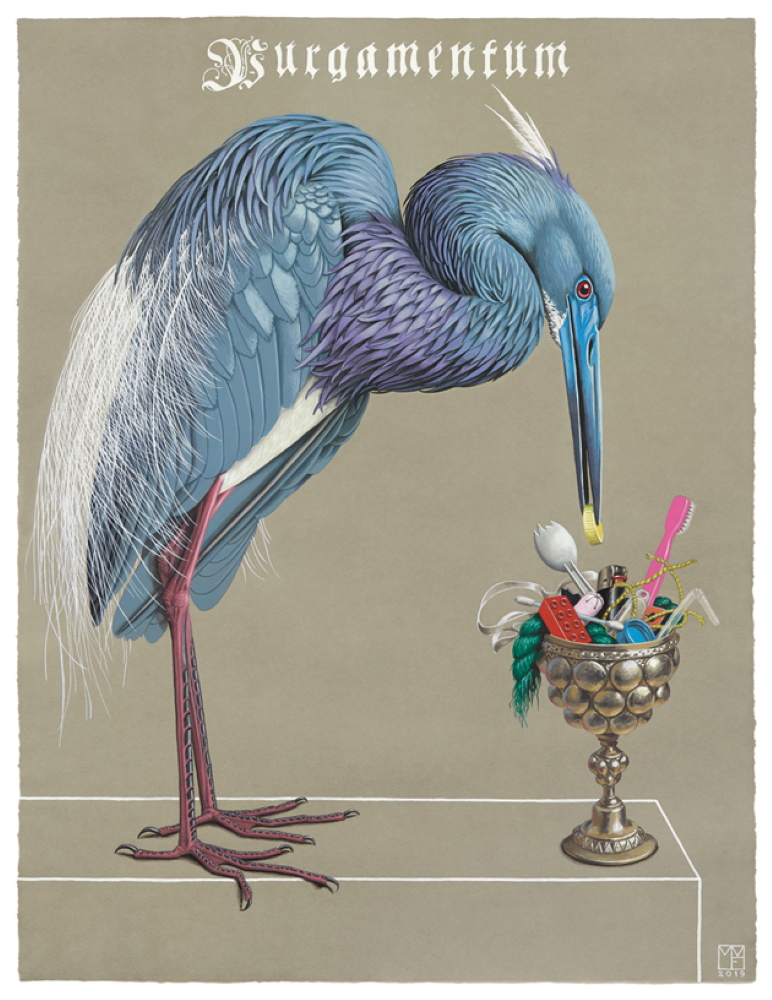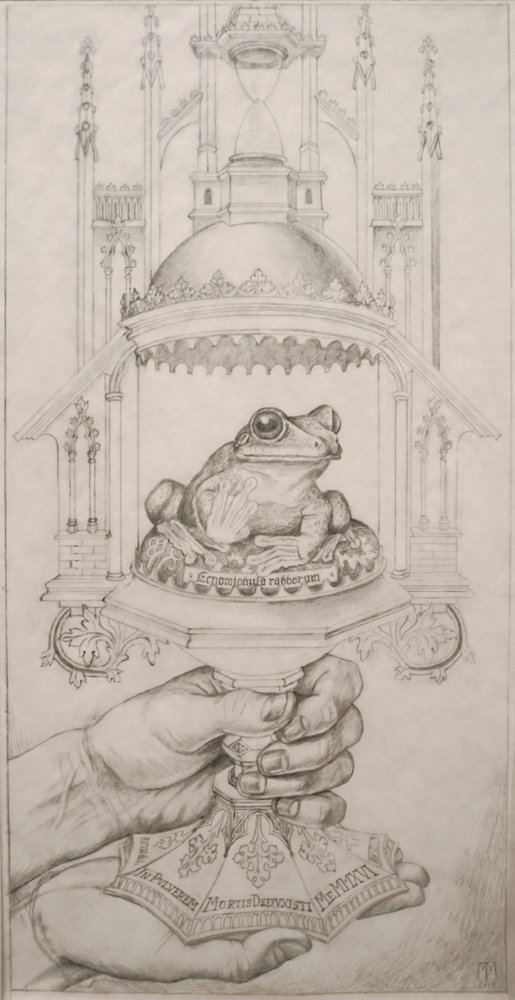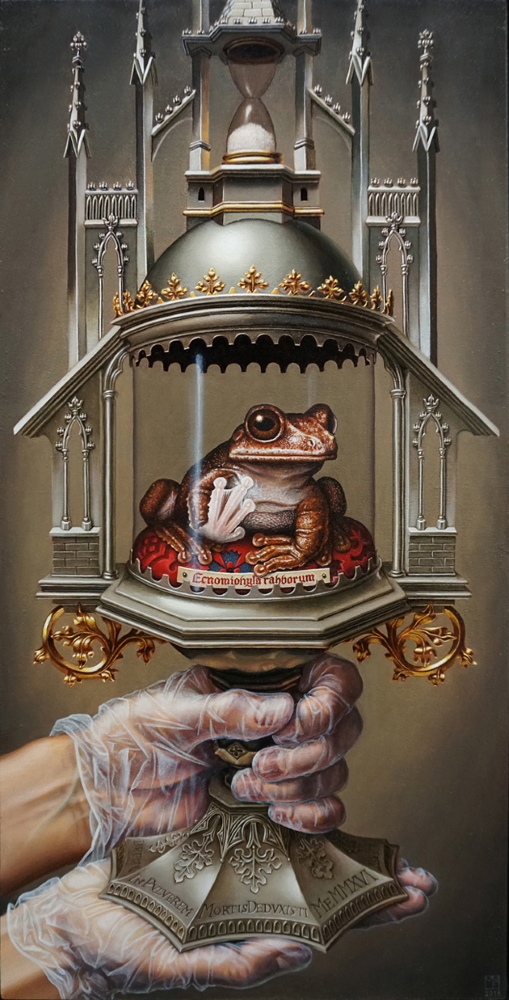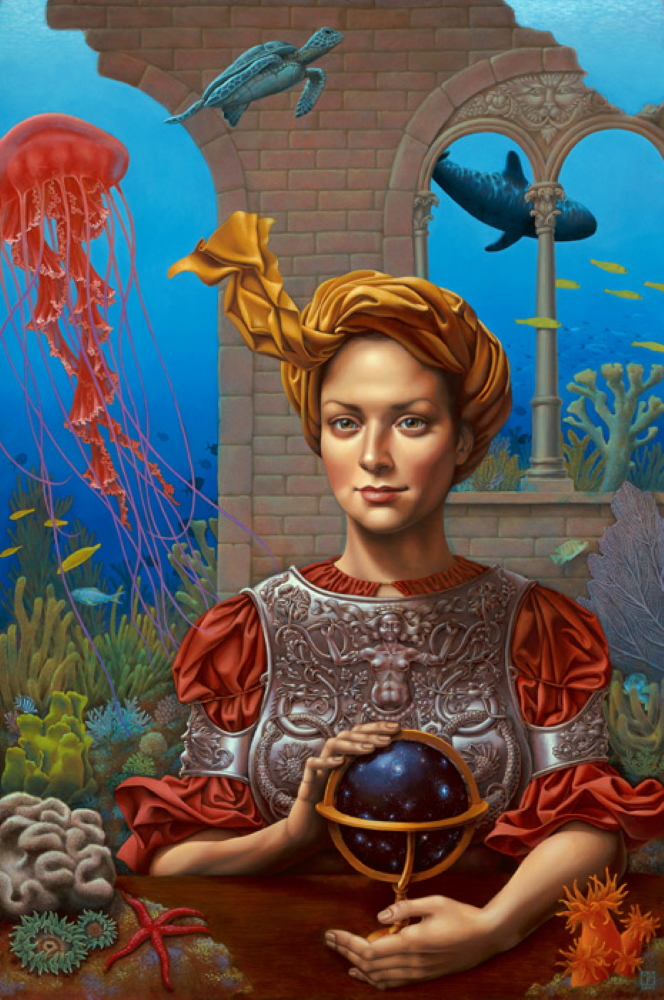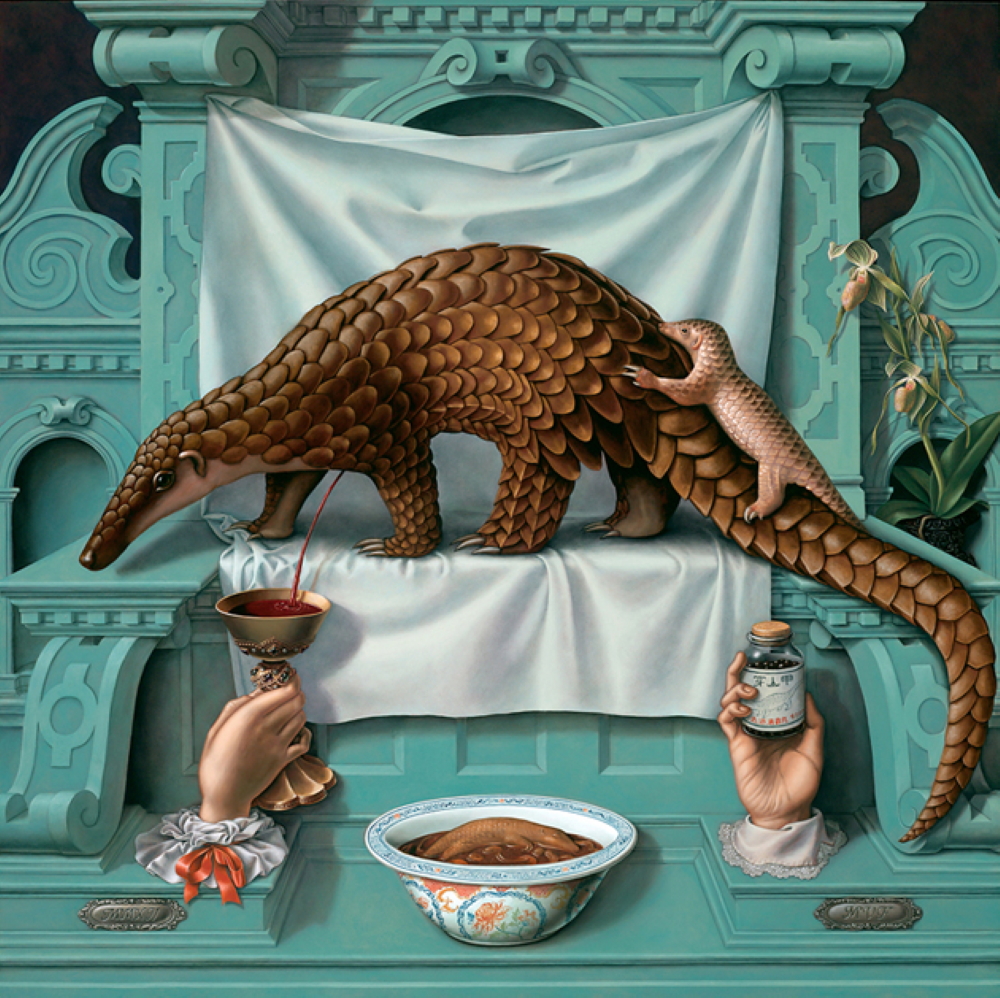Madeline von Foerster
painter
US / Germany
In the illustrated book 100 PAINTERS OF TOMORROW (Thames & Hudson) she is presented, but her works are realised in a style of painting that was common five centuries ago. „Although linked stylistically to the past“, writes the quarterly literary and visual arts magazine Catamaran in its summer 2022 title story on Madeline von Foerster, „her paintings are urgently relevant to the Anthropocene, exploring the human relationship to nature with such themes as deforestation, wildlife trafficking, and human-caused extinction.“
Madeline von Foerster
painter
US / Germany
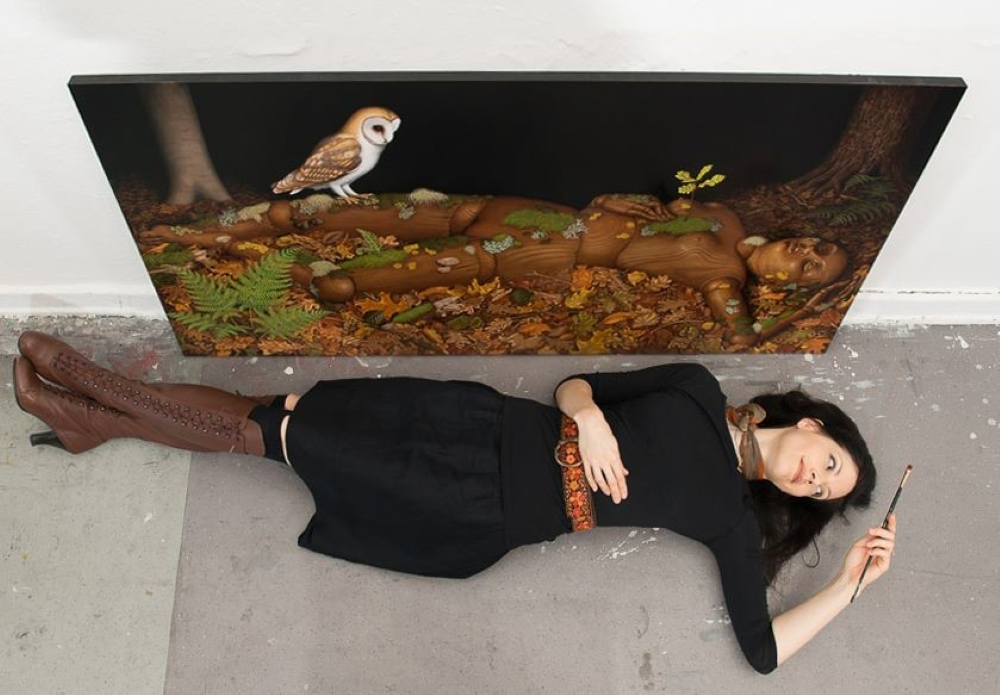
Like the Flemish masters of the Renaissance, the German-American uses oil paint and egg tempera and produces her works with a brush not on canvas but preferably on wooden panels. The result are eco-surrealist paintings of impressive perfection, often depicting the relationship between man and nature. Some of the meticulously detailed depictions are in the tradition of the art and still lifes of the Baroque. These cabinets of curiosities present objects of various origins and purposes, preferably from the field of natural history, as a kind of set box. Among other things, the intellectual exchange with her grandfather had a lasting influence on Madeline von Foerster's choice of pictorial themes. Heinz von Foerster (1911-2002) made a name for himself as a philosopher and biophysicist and is regarded as a co-founder of cybernetic science.
The daughter of a German-Americian couple was born in 1973 and grew up in San Francisco. At the age of four or five she already had her career aspiration: artist. In 1991/92 she attended the Freie Kunstschule Rhein-Neckar in Mannheim/Germany. From 1992 to 1998 Madeline studied at the internationally renowned California College of Arts and Crafts in San Francisco/USA. Other important points on her CV are the intensive mixed media courses she took with Professor Philip Rubinov-Jacobson in 2004 and 2006. The title: "Old Masters, New Visions". A similar title could be given to the plant lover's oeuvre, which preferably comprises still lifes. There, the bridge from the classical period to the present is built symbolically.
Originals by the much-publicised painter are in the possession of private individuals such as director/screenwriter Guillermo del Toro ("Hellboy", "Pan's Labyrinth", "Blade II"), Nike President Mark Parker or musician/composer John Zorn and public collections (QCC Art Gallery, City University of New York; Dean Lesher Center for the Arts, Walnut Creek/California/USA; Nevada Museum of Art, Reno/USA: Whatcom Museum, Bellingham/WA/USA and Kunstsammlung der Stadt Köln, Germany).
Madeline von Foerster, whose work is published in various exhibition catalogues and books, is married. She lives with her husband in Cologne/Germany.
Interview December 2022
Back into the future: old masters, new visions
INTUITION/IMAGINATION
Are great ideas based on intuition and do they reveal themselves in a kind of clear as well complete version that just has to be realized? Or is it endless trials and errors (after the first spark) that result in constant developments up until the final result?
Once in a long while, an extraordinary idea will simply arrive in my brain in complete form. This is the absolute exception, however – it almost never occurs. Your second description fits my normal creative process. I find that most of my ideas benefit from rethinking, refining, and often, being replaced by better ideas.
An important factor for me when developing an idea is to not get attached. I sketch on lined notebook paper, the back of photocopies, or any other disposable paper. This reassures my brain that I am not trying to make art; it disinhibits me and releases my creativity.
What if there is a deadline, but no intuition? Does the first fuel the latter maybe?
I don’t often find myself in this situation, but if I do, I usually have some unused ideas laying around which I can make use of.
INSPIRATION
What inspires you and how do you stimulate this special form of imaginativeness?
I never know exactly where inspiration will be found, and it’s not something I can typically plan for. I maintain collections of images – analog and digital – which inspire me, and these can be mined for painting ideas.
One thing that also seems to work for me is attending live music concerts, particularly classical music. First of all, the sounds themselves – if it’s a good concert – are beautiful and evocative. But also, as a self-employed person, I am almost never “off duty.” If I am not at the studio making art, there are a million other things to take care of, without end. At a concert, however, one is captive, so to speak. There is literally nothing one can do except sit and listen. This creates a special circumstance for the brain, a relaxed yet focused state which is optimal for creativity.
Has it to appeal to you primarily or is its commercial potential an essential factor?
I make the art that I want to make, and I am very fortunate that someone almost always wants to buy it. However, I don’t think anyone should assume – if their art is not yet commercially successful – that it doesn’t have the potential to be. If one can get one’s work out to a large audience, there are bound to be some people who will love it.
CREATIVITY
Which time/place/environment suits your creative work process the best (tranquillity or pressure) and which path do you take from theory/idea to creation?
I often end up working under time pressure, because my artworks take so long. A deadline can be an amazing thing for sharpening focus, and sometimes even leads to better art. However, the deadline must be achievable and realistic, and one MUST have time after a work marathon to recover. I experienced a seven-year period where I was continually under time pressure, and never went on vacation. I destroyed my health, and was unable to work for two years. I am still recovering in fact. I don’t recommend that lifestyle to anybody!
Should a creative always remain true to him-/herself including taking risks & going against the flow or must one, for reasons of (commercial) survival, make concessions to the demands of the market, the wishes of clients and the audience’s expectations?
Everyone must answer this for themselves. It’s tough to be an artist. In my experience, making the most authentic, individual work possible is what has allowed me to prosper as an artist.
When does the time come to end the creative process, to be content and set the final result free - or is it work-in-progress with an endless possibility of improvement?
Years of working under time pressure have trained me to have a sense at all stages of the process how much work remains on a piece. When this work is completed, there is usually a minimal amount of further effort required to refine, correct, and get the artwork to function as a whole. At this point, it has typically taken longer than it should have, so I am relieved to call it “finished” as soon as I can.
As I said earlier, I think deadlines can actually be beneficial, because every project reaches a point where – no matter how much more time is invested in it – it won’t become “better”.
That said, I am a perfectionist, and it is of foremost importance to me to be able to finish a work to my satisfaction. When a piece nears completion, the parts which are not yet done begin to irritate me in an almost physical way, like a bit of gravel in one’s show. I know the artwork is done when this discomfort resolves.
SUCCESS
Should/can one resist the temptation to recycle a ‘formula’ one’s successful with?
For a long time, I would have answered this question with an emphatic “yes”, till I realized that I was ignoring the example of virtually every artist more successful than myself. Not only is it not necessary to completely reinvent yourself with every artwork, but it will make it more difficult for you to establish a group of fans and supporters.
That said, some artists just produce the same artwork over and over, which is boring, lazy, and venal. Every I piece I do feels like a difficult challenge to me, so I suppose that is how I know that I am not just relying on a formula.
MY FAVORITE WORK:
'AMAZON CABINET' - "I don’t know how to pick the artwork I’m most proud of, but I would like to share this painting, done in 2008, which is the first major work done in what would become my recognizable style. The sculpture, carved from mahogany wood, represents the mahogany tree, and the organisms inside are ones that depend on the intact rainforest ecosystem to survive. For me, it felt like a giant homecoming to create a beautiful painting, which also did not compromise the ecological message I want to convey. I worked very hard on it, yet it proceeded smoothly and enjoyably, in a way that seems unfathomable to me now. I am a better painter today, but this painting will always be one of my favourites."
